Fri, 13 Mar 2015 . Last updated Thu, 25 Jun 2015 09:02


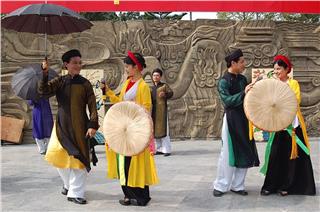

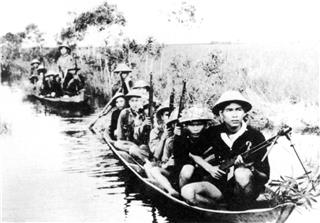
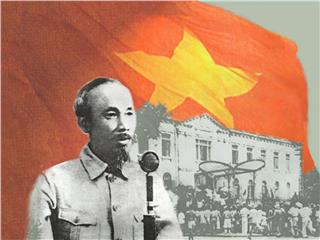
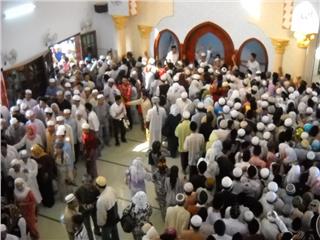

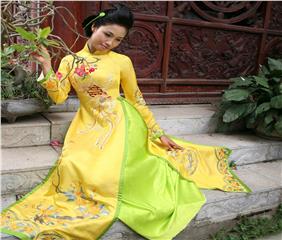
Yen Bai province is endowed by nature with fertile lands. The province is home to more than 30 ethnic minorities. Each of the minority has contributed to diversifying the cultural identity of the area. Tay people’s traditional art is quite diverse. Apart from poetry, fairy tales, there are folk melodies such as lullabies, “khap” singing, “then” singing, and “coi” singing. In modern life, those folk features are still preserved and developed by Tay people.
“Khap coi” or “khap” singing is one of the most fascinating kinds among the love duets sung by Tay men and girls. With many special cultural and spiritual values, “khap” singing has become the pride of the local ethnic people. While singing love duets, girls and often of fewer words. They will not respond to the men until they find the men’s songs meaningful. In the immense space of the Northwest mountains and forests, the sounds of flutes, other kinds of musical instruments and the melodies of “khap” songs gradually win everyone’s heart. The lyrics of the songs are the call of homeland, of love for men and girls, and love for traditional values.
Earlier, people often sang while working. Their songs are actually their inner voice. People then gradually chose and made them more rhythmic and passed them down to the following generations. “Khap” singing of Tay people is a unique kind of folk singing and a precious cultural heritage with mesmerizing melodies. And the origin of “khap” singing of Tay people has been told from generation to generation through the songs.
Earlier, people led a hard life without earning enough living. One day, there was an old man fishing by a stream. The wind suddenly blew strongly over the row of bamboo plants nearby. The sounds created by two bamboo plants when they rubbed together with the sound of the stream were so interesting. The old man suddenly sang along and felt relieved. He forgot all his sorrows. He thought God had gifted the singing to Tay people. Then he gathered people and taught them the song.
He covered a bamboo pipe with frog skin and used two silk threads and some strands of horse hair to create a two-chord musical instrument. He also pricked 7 holes on another bamboo pipe to create the sounds of the water flowing. This was then called “flute”. Since then, people play the two-chord instrument and the flute whenever they sing. “Khap” is the sound created by the following stream.
“Coi” is the sound created by the wind when it blows through the bamboo plants. “Khap” singing is a kind of impromptu love duet. When one side sings, the other will sing properly and persuasively in response. “Khap” singing starts with the two words of “hoi la”. Singers convey their feelings through images of flowers and trees. The songs are sometimes exciting and sometimes emotional.
Young men and girls learn the “khap” song by hearts and they are willing to sing in response to others. Thanks to such exchanges, many of them become husbands and wives who live happily together. The singing has been preserved from generation to generation. Young people make promises to meet each other again to sing. “Khap coi” melodies then always resound in local peoples’ working life. Their happiness originates from the simplest thing. “Khap” songs have made people forget all their worries and become part of their life despite hardship.
“Khap” singing can be performed anywhere at anytime. Meeting by chance between friends on the way to their hamlet is a bridge for the singing to become popular in the mountainous area. They share their feelings through “khap” songs and tell each other about the cultural features of each area. The songs are also sung when they invite others to chew quids of betel made in shape of phoenix wings. Teaching the songs to the youth is the most effective way to preserve this kind of singing, because the youth will decide its survival. Once they understand and love this kind of traditional art, they will patiently learn it. As such, cultural values will be preserved and developed forever.
“Khap coi” singing helps people forget their worries. The songs have been passed down from generation to generation and sung in spring festivals or weeding ceremonies by young men and girls. They sing to greet each other, make promises and show their love. With a significant role in the national culture, “khap” singing should be preserved and promoted to beautify the national culture of Vietnam in general and the culture of Tay people in Yen Bai in particular.
Source: VTC10 - NETVIET

 Đặt vé máy bay cho người Việt?
Bấm vào đây
Đặt vé máy bay cho người Việt?
Bấm vào đây
Our service uses cookies for technical, analytical and marketing purposes. See our Cookie và Privacy policies for more information. If you agree to this, just keep browsing.


